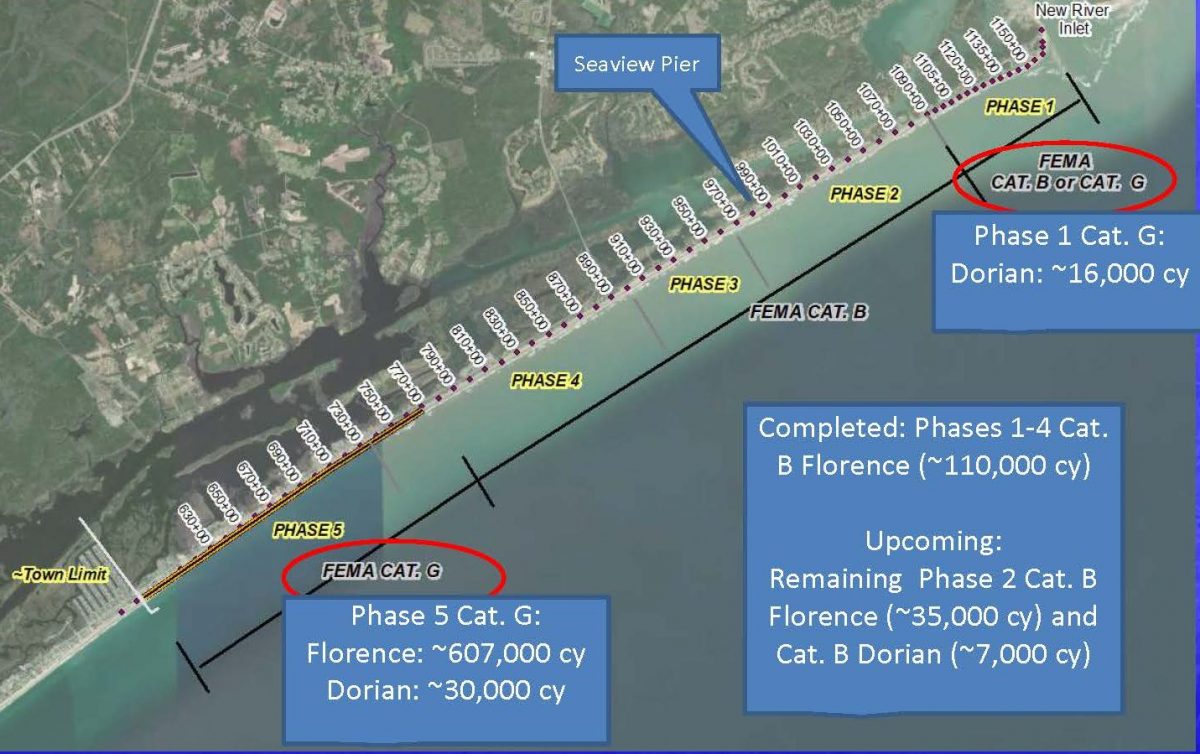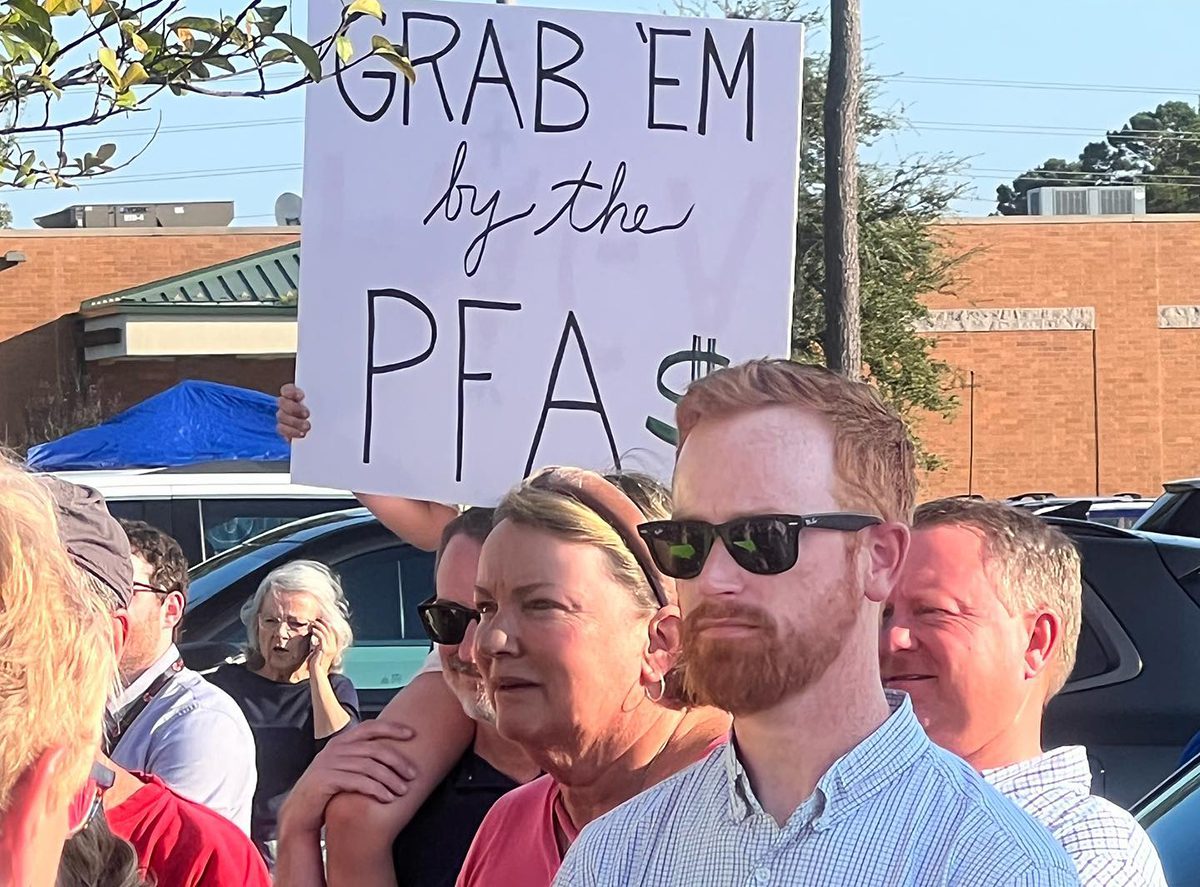
NORTH TOPSAIL BEACH – A group of property owners here hoping to salvage a proposed 50-year federal beachfront project North Topsail officials turned down last year because of funding issues wants out of the town’s limits.
But when it boils down to details of how and what it would take for those with properties in the southern section of the town to de-annex from North Topsail Beach and become part of neighboring Surf City, the likelihood of it actually happening doesn’t appear favorable to those pushing to get out.
Supporter Spotlight
Emotions ran high at a Friday, March 11, special meeting called by the North Topsail Beach Board of Aldermen on behalf of Rep. Phil Shepard, R-Onslow, who had asked to hold a meeting about the queries he’d been getting from the property owners.
Shepard told the standing-room-only crowd packed in the board’s chambers Friday that he was not taking a side but rather was there to explain the legal process of de-annexation and annexation.
Property owner George Fieser was first up at the podium to explain why he supports the annexation of the “Phase 5” area, a reference to the breakdown of North Topsail Beach’s beachfront for nourishment and dune projects.
Phase 5 is the southernmost 4½ miles of town and is not included in Coastal Barrier Resources System, or CBRS, a federal designation that prohibits government funding such as Federal Emergency Management Agency money for properties within the system.
“We’re just a different community in that phase than other parts of the town,” Fieser said. “We have the opportunity for the next 50 years and we didn’t take that. It’s not just me, but it’s the state of North Carolina that benefits.”
Supporter Spotlight
North Topsail’s elected officials last year backed away from a proposed joint project with Surf City and the U.S. Army Corps of Engineers that would secure routine nourishment of phase 5’s beachfront for 50 years.
After months of meetings, the town board concluded that, while they supported the project, the town simply could not fund its more than $33 million of the project’s cost.
The town still has another $14 million or so to pay off the U.S. Department of Agriculture loan it took out to cover the cost of a beach project in phase 5. The N.C. Local Government Commission would not permit the town to go into further debt.
Aldermen could not legally raise property taxes by the amount it would take to cover the joint project, the projected cost of which had grown exponentially from when it was first placed on the table by the Corps years ago.
North Topsail Beach aldermen last year discussed asking the North Carolina General Assembly to vote to approve the town raising the occupancy tax to generate additional revenue, a proposition that didn’t go far because of the powerful tourism lobby.
“There was not one board member that was against the project,” North Topsail Mayor Joann McDermon said. “It was, when it got down to the money and how it would affect all of the taxpayers town-wide,” not something the town could afford.
According to town officials, pro-annexation supporters are primarily property owners within one particular neighborhood, Village of Stump Sound, an area that consists largely of vacation rental homes along the beach and sound.
Shepard and a representative for North Carolina House Speaker Tim Moore explained Friday that 100% of registered voters — meaning those who claim their homes in North Topsail Beach as their primary residence — in Phase 5 would have to vote in favor of annexation into Surf City.
“That’s an onerous thing to get 100 percent of the people,” to vote in favor of annexation, said Village of Stump Sound property owner Reed Abernathy.
And, Surf City’s town board would have to vote to approve annexing the nearly 5-mile stretch of Topsail Island.
If Surf City annexed that town would incur the USDA loan, extending town services to the additional properties, and have to come up with the more than $33 million portion of the joint project.
Surf City Mayor Doug Medlin said in a telephone interview Monday that town officials there would have to examine all potential costs associated with annexing Phase 5, if the property owners can get the land de-annexed.
“We’ll be glad to talk to them if they do de-annex,” he said. “We can’t say anything as far as what we can do until they’re de-annexed.”
That includes going to the Corps to find out whether Phase 5 could be put back into the plans.
The General Assembly is the only governing body that may approve de-annexation.
“That vote can go either way in the General Assembly,” Shepard said. “If you’re de-annexed and North Topsail cuts the water and sewer and everything off, there’s a lot to look at.”
Property owner Burgess Allison expressed his support for annexation and suggested the state has a “huge” interest in seeing to it that the project moves forward.
“The Outer Banks has seen this success first hand,” he said. “Here on Topsail Island, sadly, we are really stuck with old town boundary lines that stand in the way of moving this progress forward. Frankly, I think that the state legislature, especially if the law is you have to get 100 percent of every single voter to sign up for something, the state legislature can see the benefit of the Corps’ project.”
Several people in the audience applauded his comments.
Robert Box said that though he’s not a full-time resident, he as a property owner wants to see the project go forward in North Topsail Beach.
“I’m not thrilled that I’m hearing that our interests don’t count even through we’ve paid 100 percent of our property taxes,” he said. “This is game changing. This will preserve the legacy of the beaches for us. This is home. We will never sell. If we miss this window, it will not come again.”
Some suggested whether the best course of action is to ask Pender County, not Surf City, to annex.
The occupancy tax rate in North Topsail Beach is 6% and the revenues generated are split equally between the town and Onslow County.
The northernmost stretch of Surf City is in Onslow County.
But in Pender County, Surf City collects the full 6%. The town allocates revenues generated through its portion of the 3% for tourism-related activities and the money collected from the county tax goes toward beach nourishment projects, according to the town’s website.
Sandy Cofier, a full-time resident who lives in the Ocean City area of Phase 5 in North Topsail Beach, said she supports the joint federal project, but does not want to be de-annexed.
She urged the audience to think about how long the area might go without town services if Phase 5 were to be de-annexed.
“How long does it take to be annexed?” she asked. “That’s a question everybody should ask. We need to do something to fix the beaches.”
“We are working on that,” McDermon replied.
Phase 5 is currently getting sand injections through a project that entails trucking sand to the island. About 1,000 feet of beachfront will be renourished by April 30, when sand placement activities must halt for sea turtle nesting season.
Sand hauls are to resume for the remainder of Phase 5 in November. The FEMA project includes placing 636,000 cubic yards of sand along more than 12,000 feet of the shoreline.







